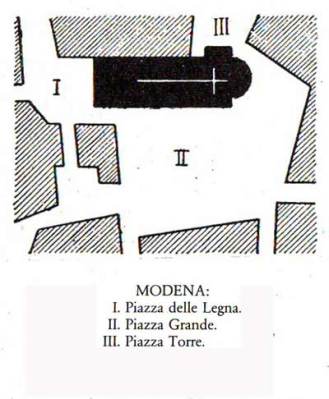By Liang Xueting , Wang Ke, Xu Xiao, Zhao Binghan and Peng Yuxiang

(Google image)
Camillo Sitte (1843–1903) was a famous Austrian architect, painter and city planning theoretician who had a huge influence and authority over the development of urban construction planning and regulations in Europe.(Planetizen,2015).
He traveled around Europe and wanted to explore the question of what makes a city or town welcoming and what were the issues faced by them. He made many points of urban planning, some of his most vital contributions have been described below.
Sitte directed the Vienna State Polytechnic School, and, he founded the periodical Der Städtebau (“City Building”; first issue ,1904). His ideas were summarized and their influence was traced in Camillo Sitte: The Birth of Modern City Planning (1965), by George Roseborough Collins and Christiane Crasemann Collins, who also translated his main book, Der StädtebaunachseinenkünstlerischenGrundsätzen (1889; 5th ed., 1922), as City Planning According to Artistic Principles (1965).(Encyclopadia Britannica, 2015)
Camillo Sitte distinguished himself in the art of city planning culminating in his seminal work City Planning According to Artistic Principles with a great influence and authority on the evolution of urban planning ,which is regulation on the European continent. This work has subsequently gone on to influence generations of urban designers and architects throughout the world.(SantaCruzArchitect, 2015)

(SantaCruzArchitect, 2015)
The most important part of civic buildings for Sitte was not the architectural form of the constructions themselves, but the form, characteristics and arrangement as building blocks contributed to the character and quality of urban spaces. During his work, Sitte traveled extensively to explore the spatial structures of then-contemporary city plazas of his own city Vienna, in Paris, Salzburg, Rothenburg on the Tauber, Dresden, and dozens of other European cities, carefully designing their physical plans, elevations of their remarkable buildings, and placement of statues, fountains and other monuments within those spaces.(SantaCruzArchitect, 2015)
Moreover, he studied their earlier precedents in Athens, Rome, Florence, Venice and Pisa. He approved the practice in ancient Greece, Rome, and Italian Renaissance of setting up buildings of enormous aspects as the physical walls of those plazas and urban spaces. Imagining what civic life in these urban spaces must have been like in the times of Pericles, Julius Caesar, and Lorenzo the Magnificent, he reflected on how the architects and city planners of those times had designed aesthetically superior spaces reinforcing civic culture.

(SantaCruzArchitect, 2015)
Sitte criticized that contemporary urban planners trend to isolate the placement of significant civic buildings, churches, and monuments as their research object, and treated them as to how such elements had been presented in former times as decorate of the urban space. (SantaCruzArchitect, 2015)
Conclusion-
Camillo Sitte’s book, ‘City Planning According To Artistic Principles’, lead a new thinking of urban planning in the 19th century which is still contributing in modern age. The nature of the city: the living environment is a social and artistically dedicated being, referring from Sitte. After his book had been published, planners changed their views in a new city section, which not only worked out with a flat survey, G.R Collins & C. Crasmann Collins (1965) claimed that Camillo Sitte’s works opened an age named ‘latter-day Sittesque’ in recent years,and he discovered universal principles out of the array of special examples that Germany and Austria cities present.
References:
Planetizen, 2015, Camillo Sitte[Online], last accessed 14thOctorber 2015 athttp://www.planetizen.com/topthinkers/sitte
Encyclopadia Britannica, 2015,CityPlanning According to Artistic Principles[Online], last accessed 14thOctorber 2015 athttps://santacruzarchitect.wordpress.com/2013/12/09/city-planning-according-to-artistic-principles/
Google images,2015, Camillo Sitte[Online], last accessed 14th Octorber,2015,at,https://www.google.co.uk/search?q=camillo+sitte&espv=2&biw=1440&bih=765&source=lnms&tbm=isch&sa=X&ved=0CAYQ_AUoAWoVChMI6tff4ovDyAIVQn8aCh358QaJ#imgrc=DR8n0JUSXlfgiM%3A
